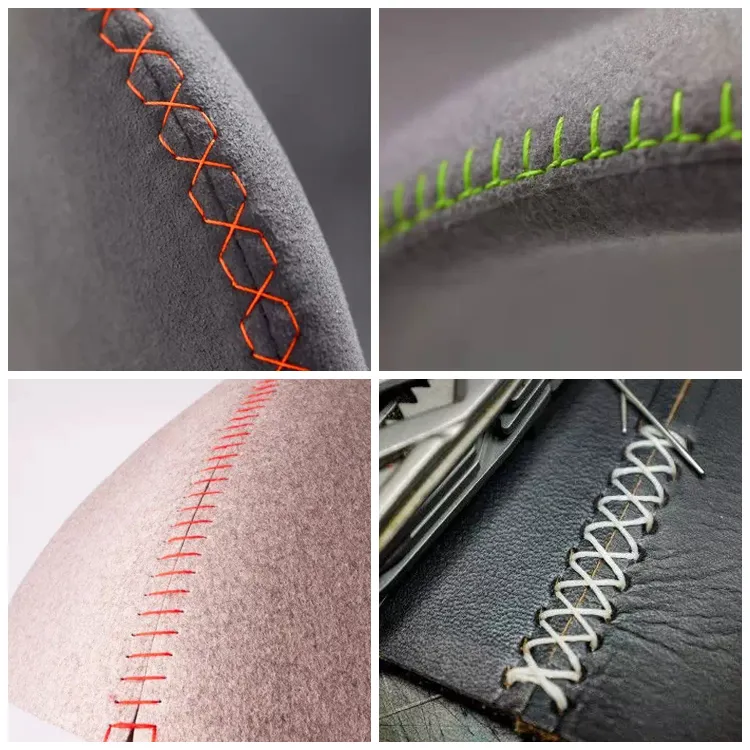Exploring the Art of Lock Stitch Sewing Techniques and Applications
Lock Sewing The Seamstress's Secret to Precision and Durability
In the intricate world of textiles and garment construction, the importance of techniques and tools cannot be overstated. Among the various sewing methods, lock sewing, often referred to as ‘lock stitch sewing,’ stands out as a vital technique that guarantees quality and durability in fabric assembly. This method, synonymous with reliability, creates a secure and flat seam, making it particularly popular among professional seamstresses, tailors, and those engaged in garment production.
Understanding Lock Sewing
Lock sewing utilizes a machine equipped with two threads the upper (needle) thread and the lower (bobbin) thread. When these threads interlock, they form a neat and strong stitch. This method is the basis for many types of sewing machines, including domestic and industrial models, and is characterized by its ease of use and versatility. Lock stitches are popular for a variety of materials, from lightweight fabrics like cotton to sturdy textiles like denim.
The primary function of lock sewing is to join two pieces of fabric together without compromising the integrity of the material. The stitches lie flat against the fabric, preventing bulkiness and providing a polished appearance—essential for tailored garments. This technique not only enhances the aesthetic quality of pieces but also contributes to their overall durability, making it less likely for seams to unravel over time.
The Advantages of Lock Sewing
One of the most compelling features of lock sewing is its strength
. Because the stitch interlocks the upper and lower threads, it creates a tight bond that withstands tension and movement. This is critical in areas of garments that experience stress, such as armholes, waistbands, and crotch seams. Additionally, the lock stitch naturally resists fraying, helping maintain the garment's integrity through numerous washes and wears.lock sewing

Moreover, lock sewing is relatively easy to learn, making it an accessible option for beginners. Many professional sewing machines come preloaded with lock stitch capabilities, allowing users to get started without complicated setups. The straightforward technique means that novice seamstresses can quickly produce high-quality seams without extensive training.
Another advantage is the adaptability of lock sewing. It can be used for a wide range of applications, from basic garment assembly to more intricate projects such as decorative stitching. Variations of the lock stitch technique allow for different aesthetics and functionality—such as straight stitching for standard seams, zigzag for stretch fabrics, and even decorative stitches to add flair to garments.
Challenges and Considerations
Despite its many benefits, lock sewing does present certain challenges. One common issue is uneven tension, which can lead to fabric puckering or stitches that are too tight or too loose. Achieving the right balance often requires practice and an understanding of the specific machine settings and fabric types being used. Additionally, maintenance of the sewing machine is crucial; regular cleaning and oiling help ensure that it operates smoothly and produces consistent results.
Conclusion
Lock sewing remains a cornerstone of garment construction, prized for its strength, versatility, and ease of use. Whether you are a hobbyist sewing at home or a professional in a bustling production facility, mastering lock stitch techniques is essential for creating durable and aesthetically pleasing garments. As the textile industry continues to evolve, lock sewing will undoubtedly maintain its place as a trusted method for achieving high-quality results, symbolizing the art of precision in the world of sewing. Embracing this technique opens a world of possibilities for creativity and craftsmanship, empowering seamstresses to produce clothing that not only looks good but lasts.
-
Industrial Cylinder Arm Sewing Machine: Revolutionizing Heavy-Duty SewingNewsJul.28,2025
-
Cylinder Arm Sewing Machine: Perfect for Special Sewing ApplicationsNewsJul.28,2025
-
Cylinder Bed Sewing Machine: Essential for Sewing Complex MaterialsNewsJul.28,2025
-
Heavy Duty Sewing Machine: The Essential Tool for Industrial ApplicationsNewsJul.28,2025
-
Computerized Pattern Sewing Machine: Revolutionizing Precision StitchingNewsJul.28,2025
-
Heavy Duty Industrial Sewing Machine: Power Meets PrecisionNewsJul.28,2025
-
Leather Sewing Machine: The Industrial Standard for Tough MaterialsNewsJul.18,2025





























